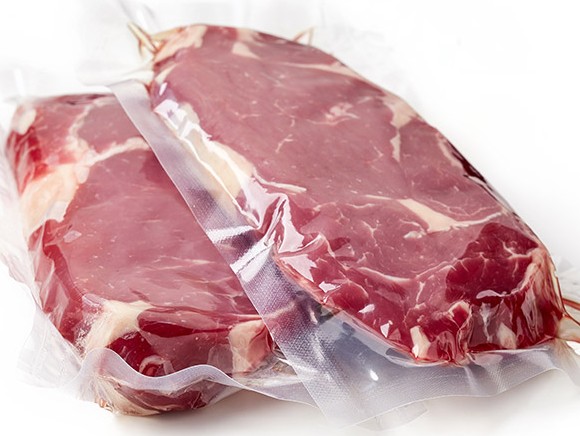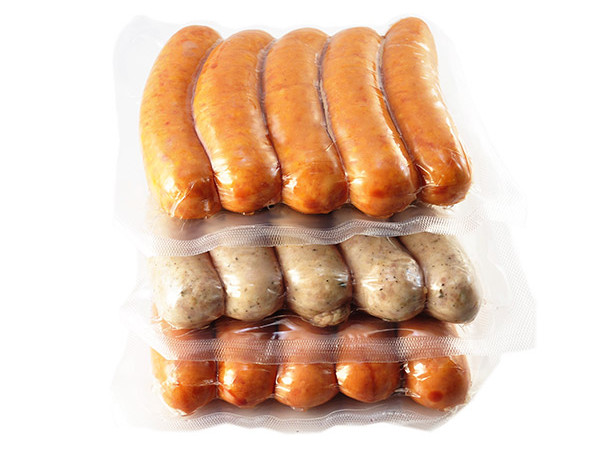
Vacuum packaging protects meat against contamination during storage and transport, and slows down microbiological spoilage. By also gradually reducing the temperature during transport, it is possible to keep the meat microbiologically safe for longer periods. But – despite the vacuum and despite the low temperature – things sometimes go wrong and microorganisms multiply, causing spoilage.
What causes a product to lose its vacuum during storage and, in the case of storage for longer periods, the packaging to even start to bulge? Can this be prevented and, if so, how?
We conducted research into meat packaging that had swollen up like a balloon. Interestingly, classical microbiological analysis to identify the cause of spoilage did not reveal any deviations, despite the visible signs of decay: bulging packaging film and a sulphur-like smell upon opening. Only after investigation using QPCR (a DNA-based technique) was it possible to detect the presence of Clostridium estertheticum, Clostridium laramiense and Clostridium gasigenes. All three of these bacteria are capable of forming gas. The gas formation only occurs in the case of a long storage period in vacuum at low temperatures.
Microbiological spoilage of fresh meat is caused by the rapid multiplication of various microorganisms. Whether the meat actually decays or not depends on the intrinsic characteristics of the meat and on extrinsic factors such as temperature and the composition of the gas atmosphere (Nychas and Skandamis 2005). In aerobic (oxygen-requiring) conditions, decay is primarily caused by species of Pseudomonas (Gill and Newton 1977). In an anaerobic atmosphere (i.e. in the absence of oxygen) it is caused by lactic acid bacteria and/or Clostridia.
In 2006/2007, research was conducted in four slaughterhouses in Ireland aimed at demonstrating the presence of Clostridium estertheticum and C. gasigenes. A total of 1,680 samples were collected, from before, during and after slaughter. 218 of those samples tested positive for C. estertheticum and 300 for C. gasigenes (C. laramiense was not investigated).
Related research suggests that the presence of high numbers of lactic acid bacteria, and their formation of bactericides, has an inhibiting effect on the Clostridia.
Other research, conducted in New Zealand, demonstrated that contamination with even just one Clostridia spore is enough to cause gas formation and hence spoilage in vacuum-packed beef during a storage period of 43 days at 2 °C. At a storage temperature of -1.5 °C it was possible to achieve a storage period of 72 days before gas formation became visible. Furthermore, it became apparent that particularly meat that is vacuum-packed in shrink film and is exposed to a brief heat treatment (3 seconds at 90 °C) in order to shrink the vacuum bag tightly around it displays earlier and faster growth of Clostridia. The brief heat treatment activates the germination of the Clostridia spores.
The occurrence of Clostridia is widespread in animals and hence in slaughterhouses. But how can Clostridia spoilage nevertheless be prevented in vacuum-packed meat?
Good hygiene practices in the slaughtering and dehiding processes are absolutely essential to avoid contamination of the meat. Besides that, it is important to regularly disinfect the clean area of the slaughterhouse with agents that kill off spores.
Disinfection agents based on peracetic acid, chlorine or formaldehyde are most suitable for this.

It is preferable to package fresh meat in vacuum film rather than shrink film; the heat treatment that is required to shrink the film activates the germination of the Clostridia spores. If shrink film is chosen in spite of this, then lower temperatures and shorter periods of exposure to heat will reduce the risk. It is also possible to slow down the growth by keeping the storage temperature of the vacuum-packed fresh meat as low as possible (-1.5 to -1.7 °C).
Source: © Svetlana Foote/Shutterstock